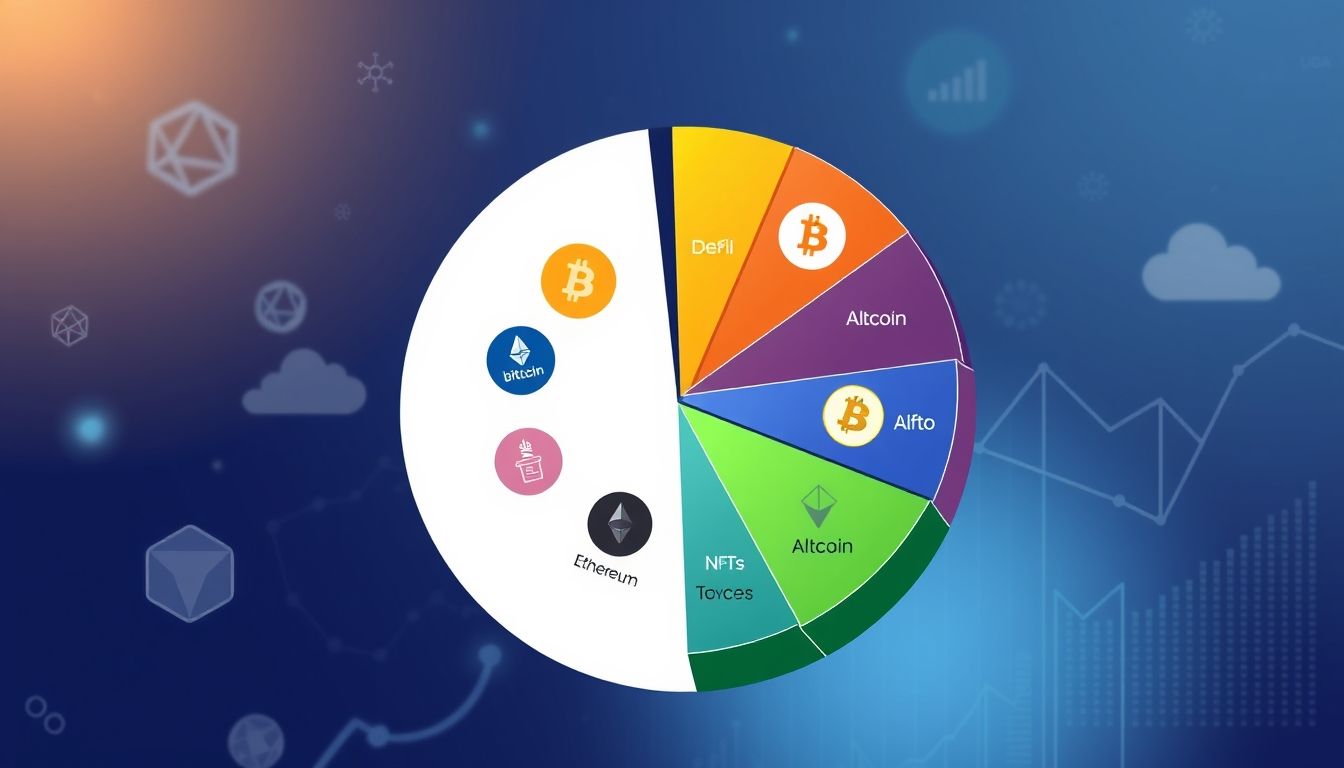مقدمة
في عالم الاستثمار المتغير باستمرار، يبحث المستثمرون باستمرار عن طرق جديدة لتنويع محافظهم الاستثمارية وحماية ثرواتهم من التضخم وتقلبات السوق. ظهرت العملات الرقمية والذهب الرقمي كبدائل محتملة للاستثمارات التقليدية مثل الأسهم والسندات والعقارات. يهدف هذا المقال إلى تحليل شامل لهذه الأصول الرقمية، وتقييم إمكاناتها كملاذ آمن وقيمة حقيقية، مع الأخذ في الاعتبار المخاطر والتحديات المرتبطة بها.
الفصل الأول: فهم العملات الرقمية
1.1 ما هي العملات الرقمية؟
العملات الرقمية هي أصول رقمية أو افتراضية تستخدم علم التشفير لتأمين المعاملات والتحكم في إنشاء وحدات جديدة. تعمل معظم العملات الرقمية على شبكة لامركزية، عادةً ما تكون تقنية البلوك تشين، مما يجعلها مستقلة عن سيطرة الحكومات والمؤسسات المالية.
1.2 أنواع العملات الرقمية
- العملات المشفرة: مثل البيتكوين والإيثريوم، وهي الأكثر شهرة وتستخدم على نطاق واسع.
- العملات المستقرة: مرتبطة بقيمة أصل مستقر نسبيًا، مثل الدولار الأمريكي، لتقليل التقلبات.
- عملات البنوك المركزية الرقمية (CBDCs): عملات رقمية تصدرها وتدعمها البنوك المركزية.
1.3 تقنية البلوك تشين
البلوك تشين هي دفتر حسابات رقمي لامركزي وموزع، يسجل جميع المعاملات بشكل دائم وآمن. تضمن هذه التقنية الشفافية والأمان والموثوقية في معاملات العملات الرقمية.
الفصل الثاني: الذهب الرقمي: نظرة عامة
2.1 ما هو الذهب الرقمي؟
الذهب الرقمي هو تمثيل رقمي للذهب الحقيقي، يتم تخزينه عادةً في خزائن آمنة ومدعوم بكمية مماثلة من الذهب الفعلي. يهدف الذهب الرقمي إلى الجمع بين استقرار الذهب وسهولة تداول العملات الرقمية.
2.2 مزايا الذهب الرقمي
- الاستقرار: مدعوم بالذهب الفعلي، مما يجعله أقل عرضة للتقلبات الشديدة مقارنة بالعملات المشفرة.
- السيولة: يمكن تداوله بسهولة عبر الإنترنت، مما يوفر سيولة عالية.
- الأمان: يتم تخزين الذهب الفعلي في خزائن آمنة، مما يقلل من مخاطر السرقة أو الضياع.
2.3 أمثلة على الذهب الرقمي
تتضمن بعض الأمثلة على الذهب الرقمي PAX Gold (PAXG) و Tether Gold (XAUT)، وهي رموز مدعومة بالذهب الفعلي المخزن في خزائن آمنة.
الفصل الثالث: العملات الرقمية والذهب الرقمي كملاذ آمن
3.1 التحوط ضد التضخم
يعتبر الذهب تقليديًا ملاذًا آمنًا ضد التضخم، حيث يميل سعره إلى الارتفاع عندما تنخفض قيمة العملات الورقية. بالمثل، يرى البعض أن العملات الرقمية، وخاصة البيتكوين، يمكن أن تعمل كمخزن للقيمة في أوقات التضخم.
3.2 الأداء التاريخي
أظهرت العملات الرقمية والذهب الرقمي أداءً متباينًا خلال فترات التضخم. في حين أن البيتكوين شهد ارتفاعات وانخفاضات كبيرة، حافظ الذهب الرقمي على استقرار نسبي. يجب على المستثمرين تحليل الأداء التاريخي بعناية قبل اتخاذ قرارات الاستثمار.
3.3 المخاطر والتحديات
تشمل المخاطر المرتبطة بالعملات الرقمية والذهب الرقمي التقلبات الشديدة، والمخاطر التنظيمية، ومخاطر الأمن السيبراني. يجب على المستثمرين أن يكونوا على دراية بهذه المخاطر وأن يتخذوا الاحتياطات اللازمة لحماية استثماراتهم.
الفصل الرابع: مقارنة بين العملات الرقمية والذهب الرقمي والاستثمارات التقليدية
4.1 الأسهم والسندات
تعتبر الأسهم والسندات من الاستثمارات التقليدية التي تقدم عوائد محتملة ودخل ثابت. ومع ذلك، فهي أيضًا عرضة لتقلبات السوق والمخاطر الاقتصادية. يمكن أن توفر العملات الرقمية والذهب الرقمي تنويعًا للمحفظة الاستثمارية وتقليل المخاطر الإجمالية.
4.2 العقارات
تعتبر العقارات استثمارًا طويل الأجل يمكن أن يوفر دخلًا إيجاريًا وتقديرًا في القيمة. ومع ذلك، فهي أيضًا غير سائلة وتتطلب رأس مال كبير. يمكن أن توفر العملات الرقمية والذهب الرقمي بديلًا سائلًا ومنخفض التكلفة للاستثمار في العقارات.
4.3 الذهب التقليدي
الذهب التقليدي هو أصل مادي يمكن أن يوفر تحوطًا ضد التضخم وعدم اليقين الاقتصادي. ومع ذلك، فإنه أيضًا غير سائل ويتطلب تخزينًا آمنًا. يوفر الذهب الرقمي مزايا الذهب التقليدي مع سهولة التداول والتخزين الرقمي.
الفصل الخامس: التنويع وأهميته في الاستثمار
5.1 مفهوم التنويع
التنويع هو استراتيجية استثمارية تهدف إلى تقليل المخاطر عن طريق توزيع الاستثمارات عبر مجموعة متنوعة من الأصول. يمكن أن يشمل ذلك الأسهم والسندات والعقارات والعملات الرقمية والذهب الرقمي.
5.2 فوائد التنويع
- تقليل المخاطر: عن طريق توزيع الاستثمارات، يمكن للمستثمرين تقليل تأثير أي خسارة في أصل واحد على المحفظة الإجمالية.
- زيادة العوائد المحتملة: عن طريق الاستثمار في مجموعة متنوعة من الأصول، يمكن للمستثمرين زيادة فرصهم في تحقيق عوائد أعلى.
- التحوط ضد التضخم: عن طريق الاستثمار في الأصول التي تميل إلى الارتفاع في القيمة خلال فترات التضخم، مثل الذهب والعملات الرقمية.
5.3 كيفية التنويع
يمكن للمستثمرين تنويع محافظهم الاستثمارية عن طريق الاستثمار في مجموعة متنوعة من الأصول، بما في ذلك الأسهم والسندات والعقارات والعملات الرقمية والذهب الرقمي. يجب عليهم أيضًا النظر في توزيع استثماراتهم عبر مختلف القطاعات والمناطق الجغرافية.
الفصل السادس: المخاطر المرتبطة بالعملات الرقمية والذهب الرقمي
6.1 التقلبات الشديدة
تعتبر التقلبات الشديدة من أكبر المخاطر المرتبطة بالعملات الرقمية، حيث يمكن أن تتغير الأسعار بسرعة وبشكل كبير. يجب على المستثمرين أن يكونوا مستعدين لخسارة جزء كبير من استثماراتهم في العملات الرقمية.
6.2 المخاطر التنظيمية
لا تزال البيئة التنظيمية للعملات الرقمية غير واضحة في العديد من البلدان، مما يخلق حالة من عدم اليقين للمستثمرين. قد تؤثر التغييرات التنظيمية سلبًا على قيمة العملات الرقمية.
6.3 مخاطر الأمن السيبراني
تتعرض العملات الرقمية والذهب الرقمي لمخاطر الأمن السيبراني، مثل القرصنة والاحتيال. يجب على المستثمرين اتخاذ الاحتياطات اللازمة لحماية محافظهم الرقمية.
الفصل السابع: الأطر التنظيمية والقانونية
7.1 الوضع التنظيمي العالمي
يختلف الوضع التنظيمي للعملات الرقمية والذهب الرقمي اختلافًا كبيرًا بين البلدان. بعض البلدان تتبنى هذه الأصول الرقمية، بينما تفرض بلدان أخرى قيودًا صارمة عليها.
7.2 تأثير التنظيم على السوق
يمكن أن يكون للتنظيم تأثير كبير على سوق العملات الرقمية والذهب الرقمي. يمكن أن يؤدي التنظيم الإيجابي إلى زيادة الثقة والاستثمار، بينما يمكن أن يؤدي التنظيم السلبي إلى انخفاض الأسعار والنشاط.
7.3 الامتثال القانوني
يجب على المستثمرين في العملات الرقمية والذهب الرقمي الامتثال للقوانين واللوائح المحلية والدولية، بما في ذلك قوانين مكافحة غسل الأموال وتمويل الإرهاب.
الفصل الثامن: مستقبل العملات الرقمية والذهب الرقمي
8.1 التطورات التكنولوجية
تشهد العملات الرقمية والذهب الرقمي تطورات تكنولوجية مستمرة، مثل تطوير تقنيات البلوك تشين الجديدة وتحسين الأمان والكفاءة. يمكن أن تؤدي هذه التطورات إلى زيادة تبني هذه الأصول الرقمية.
8.2 التبني المؤسسي
يزداد اهتمام المؤسسات المالية الكبيرة بالعملات الرقمية والذهب الرقمي، مما قد يؤدي إلى زيادة التبني المؤسسي لهذه الأصول. يمكن أن يوفر التبني المؤسسي مزيدًا من الاستقرار والسيولة للسوق.
8.3 التوقعات المستقبلية
يتوقع العديد من الخبراء أن تلعب العملات الرقمية والذهب الرقمي دورًا متزايد الأهمية في النظام المالي العالمي في المستقبل. ومع ذلك، لا تزال هناك تحديات ومخاطر يجب معالجتها.
الفصل التاسع: نصائح للمستثمرين
9.1 البحث والتحليل
يجب على المستثمرين إجراء بحث وتحليل شامل قبل الاستثمار في العملات الرقمية والذهب الرقمي. يجب عليهم فهم التكنولوجيا والمخاطر والفرص المرتبطة بهذه الأصول الرقمية.
9.2 إدارة المخاطر
يجب على المستثمرين إدارة المخاطر بعناية عن طريق تنويع محافظهم الاستثمارية وتحديد حجم الاستثمار المناسب لكل أصل. يجب عليهم أيضًا أن يكونوا مستعدين لخسارة جزء كبير من استثماراتهم في العملات الرقمية.
9.3 الاستشارة المالية
ينصح المستثمرون باستشارة مستشار مالي مؤهل قبل اتخاذ قرارات الاستثمار في العملات الرقمية والذهب الرقمي. يمكن للمستشار المالي تقديم المشورة المهنية بناءً على الوضع المالي والأهداف الاستثمارية لكل فرد.
الفصل العاشر: الخلاصة
تقدم العملات الرقمية والذهب الرقمي بدائل مثيرة للاهتمام للاستثمارات التقليدية، مع إمكانية التحوط ضد التضخم وتنويع المحفظة الاستثمارية. ومع ذلك، يجب على المستثمرين أن يكونوا على دراية بالمخاطر والتحديات المرتبطة بهذه الأصول الرقمية وأن يتخذوا الاحتياطات اللازمة لحماية استثماراتهم. من خلال البحث والتحليل وإدارة المخاطر والاستشارة المالية، يمكن للمستثمرين اتخاذ قرارات مستنيرة بشأن الاستثمار في العملات الرقمية والذهب الرقمي.




